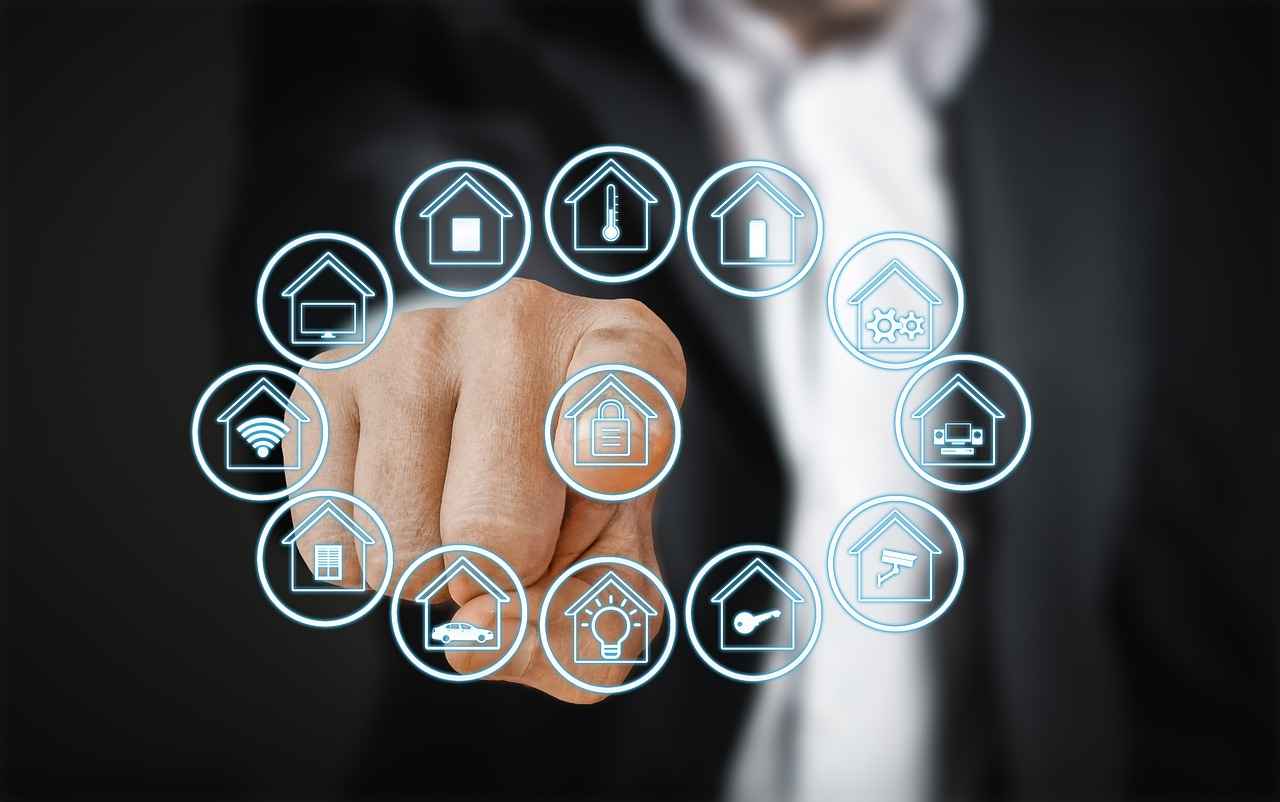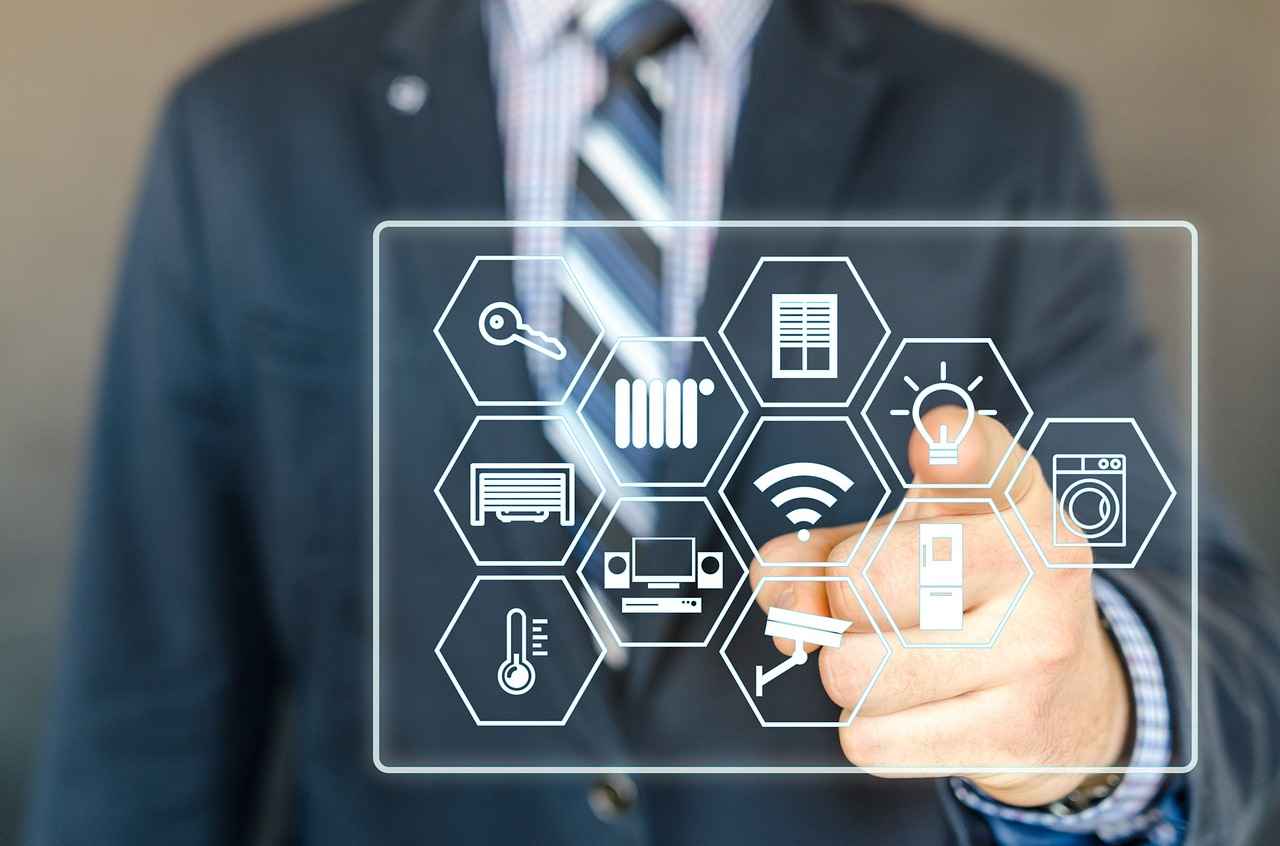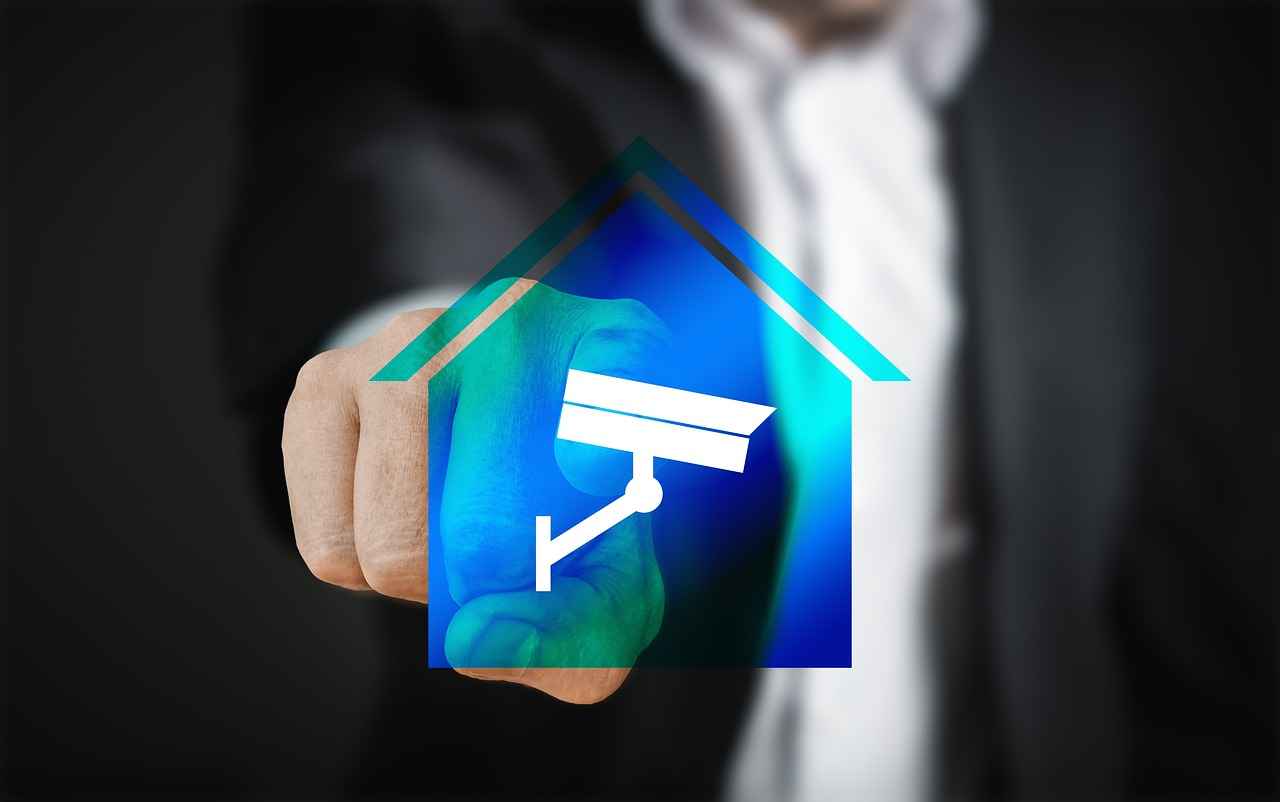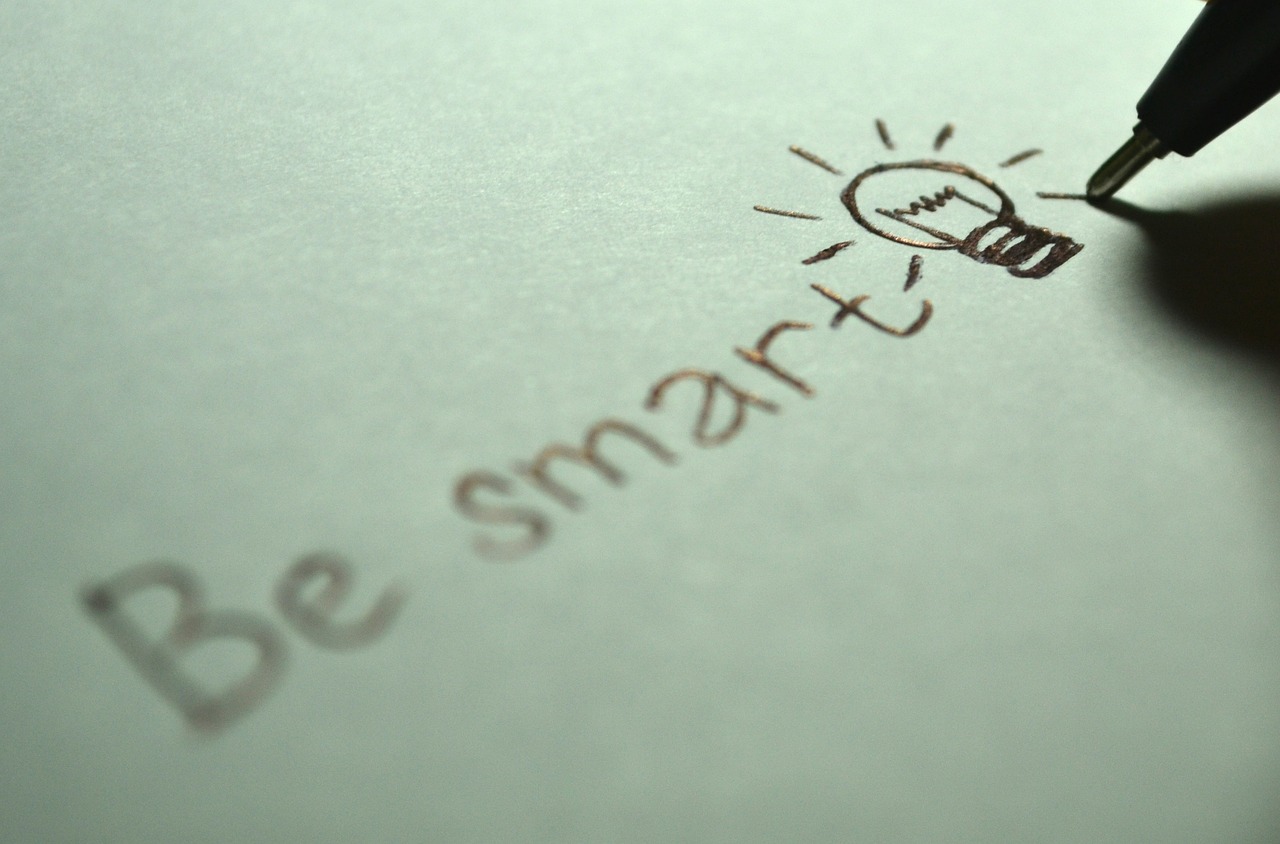This article delves into the transformative impact of Matter smart home devices, highlighting their features, benefits, and how they significantly enhance your living environment for a more connected and efficient lifestyle.
What are Matter Smart Home Devices?
Matter smart home devices represent a groundbreaking standard in smart home technology. They are engineered to ensure interoperability and ease of use across various platforms and ecosystems, ultimately enhancing user experience and connectivity.
How Do Matter Devices Work?
Utilizing a unified protocol, Matter devices communicate seamlessly with one another, regardless of brand or operating system. This simplifies the smart home experience, allowing users to control their devices with remarkable ease.
The Role of IP in Matter Devices
Internet Protocol (IP) is pivotal in Matter devices, enabling them to connect directly to the internet. This facilitates communication with other devices over Wi-Fi, Ethernet, or Thread networks, thus improving overall functionality.
Benefits of IP Connectivity
- Reliable communication for remote control
- Real-time updates
- Integration into broader home automation systems
Security Features of Matter Protocol
The Matter protocol incorporates robust security features, such as end-to-end encryption and secure device onboarding, ensuring user data and privacy are safeguarded while using smart home devices.
Compatibility with Existing Devices
A key advantage of Matter devices is their compatibility with a wide range of existing smart home devices. This allows users to upgrade their systems without the need to replace all their current gadgets.
Benefits of Using Matter Smart Home Devices
These devices offer numerous benefits, including improved interoperability, enhanced security, and user-friendly experiences, making them an attractive option for anyone looking to upgrade their smart home setup.
Improved Interoperability
With Matter’s unified standard, devices from different manufacturers can work together seamlessly. This eliminates the frustration of managing multiple apps and platforms for controlling smart home technology.
Enhanced User Experience
Prioritizing user experience, Matter devices simplify setup processes, provide intuitive controls, and ensure that users can easily integrate their smart home devices into their daily routines.
Future of Smart Home Technology with Matter
The future of smart home technology appears promising with Matter, as more manufacturers adopt the standard, leading to an increasingly interconnected and efficient ecosystem that enhances everyday living.
Industry Adoption of Matter
As major tech companies embrace the Matter standard, the smart home market is anticipated to grow significantly, offering consumers more choices and innovative solutions to improve their living spaces.
Potential Challenges Ahead
Despite its advantages, the widespread adoption of Matter may face challenges, including the need for ongoing updates, user education, and ensuring that legacy devices remain compatible with new technology.
Conclusion: Embracing the Matter Revolution
In conclusion, Matter smart home devices signify a significant advancement in smart home technology. They offer increased compatibility, enhanced security, and a better user experience, making them a worthwhile investment for modern living.

What are Matter Smart Home Devices?
Matter smart home devices represent a groundbreaking shift in the realm of home automation technology. These devices are built on a unified standard that promotes interoperability across various brands and platforms. This means that users can enjoy a seamless experience, regardless of the manufacturer of their smart home products.
At the core of Matter’s design is the goal to enhance connectivity and simplify user interactions. By utilizing a common protocol, Matter devices can communicate with each other effortlessly, allowing for a cohesive ecosystem that integrates lighting, security, heating, and entertainment systems. This integration not only enhances user experience but also boosts the overall efficiency of home automation.
Key Features of Matter Smart Home Devices
- Interoperability: Matter’s standard allows devices from different manufacturers to work together, eliminating the hassle of managing multiple apps and interfaces.
- Ease of Use: Setup processes are streamlined, making it easier for users to install and configure their smart home devices.
- Security: The Matter protocol incorporates advanced security measures, including end-to-end encryption, to protect user data and privacy.
Why Choose Matter?
Choosing Matter smart home devices means investing in a future-proof solution for your home. As the technology evolves, the ecosystem will continue to expand, offering users more options and enhanced functionalities. With Matter, consumers can expect a more connected and efficient living environment.
Conclusion
In summary, Matter smart home devices are revolutionizing the way we interact with technology in our homes. By prioritizing interoperability, security, and user experience, Matter is poised to set a new standard in smart home innovation, making it an essential choice for modern living.

How Do Matter Devices Work?
Matter devices represent a groundbreaking leap in smart home technology, utilizing a unified protocol that allows for seamless communication between devices, irrespective of their brand or operating system. This innovation significantly simplifies the smart home experience, enabling users to control their devices with remarkable ease.
At the core of Matter’s functionality is its reliance on Internet Protocol (IP), which facilitates direct connections to the internet. This allows devices to communicate over various networks, such as Wi-Fi, Ethernet, or Thread. The use of IP not only enhances connectivity but also ensures that devices can interact with one another efficiently, creating a more cohesive smart home ecosystem.
Key Features of Matter Devices:
- Interoperability: Matter devices can work together regardless of the manufacturer, eliminating the hassle of using multiple apps or ecosystems.
- Easy Setup: The setup process for Matter devices is designed to be user-friendly, requiring minimal technical knowledge.
- Remote Control: Users can manage their devices from anywhere, offering convenience and flexibility.
- Enhanced Security: Matter incorporates robust security measures, including end-to-end encryption, to protect user data.
Moreover, the compatibility of Matter devices with existing smart home gadgets means that users can upgrade their systems without the need to replace all their current devices. This aspect not only saves money but also enhances the overall user experience.
In conclusion, the Matter protocol is revolutionizing how smart devices interact, making home automation simpler, more secure, and more efficient. As more manufacturers adopt this standard, the future of smart home technology is set to become even more interconnected, ultimately enhancing the way we live.
The Role of IP in Matter Devices
In the rapidly evolving landscape of smart home technology, Internet Protocol (IP) serves as a pivotal element in the functionality of Matter devices. These devices leverage IP to establish direct connections to the internet, facilitating seamless communication across various networks, including Wi-Fi, Ethernet, and Thread. This connectivity is essential for enhancing the overall user experience and operational efficiency of smart home ecosystems.
By utilizing IP, Matter devices can interact with one another and with the broader internet, allowing users to control their devices from anywhere. This capability is particularly beneficial for those who seek to manage their home environments remotely, providing them with the flexibility to adjust settings, monitor security, and receive real-time updates.
Benefits of IP Connectivity
- Remote Control: Users can manage their Matter devices from their smartphones or tablets, ensuring convenience and accessibility.
- Real-time Updates: IP connectivity allows for instant notifications and updates, keeping users informed about their home’s status.
- Integration with Home Automation: Matter devices can easily integrate into existing home automation systems, enhancing their functionality and user experience.
The adoption of IP in Matter devices not only streamlines communication but also contributes to the interoperability of smart home products. This means that devices from different manufacturers can work together harmoniously, reducing the complexity of managing multiple systems.
Moreover, the utilization of IP brings significant security advantages. With robust encryption protocols in place, users can trust that their data remains secure while enjoying the benefits of a connected home.
In conclusion, the role of Internet Protocol in Matter devices is instrumental in creating a more connected, efficient, and user-friendly smart home environment. As technology continues to advance, understanding the importance of IP connectivity will be crucial for both consumers and manufacturers alike.
Benefits of IP Connectivity
In the realm of smart home technology, IP connectivity serves as a backbone for effective communication among devices. This connectivity is pivotal for enhancing user experience and ensuring that smart devices operate smoothly within a cohesive ecosystem.
| Benefit | Description |
|---|---|
| Remote Control | With IP connectivity, users can control their devices from anywhere, allowing for greater convenience and flexibility in managing home systems. |
| Real-time Updates | IP-enabled devices can send and receive real-time notifications, keeping users informed about their home environment, such as security alerts or energy usage. |
| Integration | IP connectivity facilitates the integration of various devices into a unified home automation system, enhancing overall functionality and user experience. |
| Scalability | As new devices emerge, IP connectivity allows for easy addition to existing systems without major overhauls, ensuring that homes can evolve with technology. |
| Enhanced Security | IP connectivity supports advanced security protocols, ensuring that data transmitted between devices is encrypted and secure from unauthorized access. |
The advantages of IP connectivity in Matter devices extend beyond mere convenience. They empower users to create a more efficient and responsive living environment. By enabling seamless communication, these devices contribute to a smarter, more connected home.
In conclusion, the integration of IP connectivity within Matter devices not only enhances functionality but also significantly improves user experience. As technology continues to advance, embracing these features will be crucial for anyone looking to optimize their smart home ecosystem.
Security Features of Matter Protocol
The security features of the Matter protocol are pivotal in ensuring a safe and secure smart home environment. As smart home technology continues to evolve, the need for robust security measures becomes increasingly critical to protect user data and privacy.
At the heart of the Matter protocol’s security framework is end-to-end encryption. This technology ensures that data transmitted between devices is securely encrypted, making it nearly impossible for unauthorized parties to access sensitive information. This means that whether you are controlling your thermostat or security cameras, your data remains private and secure.
Another essential component is the secure device onboarding process. This feature simplifies the integration of new devices into your smart home network while ensuring that each device is verified and authenticated before it can communicate with other devices. This prevents unauthorized devices from joining your network, thereby enhancing overall security.
Moreover, the Matter protocol employs regular security updates to address potential vulnerabilities. As new threats emerge, the protocol is designed to adapt and provide users with the latest security enhancements, ensuring that their smart home devices remain protected over time.
In addition to these features, the Matter protocol’s emphasis on interoperability means that devices from various manufacturers can communicate securely. This unified approach not only enhances user experience but also strengthens security by reducing the number of potential entry points for cyber threats.
In conclusion, the security features of the Matter protocol, including end-to-end encryption, secure device onboarding, and regular updates, play a crucial role in safeguarding user data and privacy in smart home environments. As the adoption of smart home technology continues to grow, these features will be vital in ensuring a secure and reliable user experience.
Compatibility with Existing Devices
In today’s rapidly evolving technological landscape, one of the most significant advantages of Matter smart home devices is their exceptional compatibility with a broad spectrum of existing smart home devices. This compatibility allows users to enhance their smart home systems without the need to replace all their current gadgets, making the transition to a more integrated and efficient home environment both seamless and cost-effective.
Matter’s unified protocol ensures that devices from various manufacturers can communicate effortlessly with each other. This interoperability is a game changer for users who have invested in smart home technology over the years. Instead of being locked into a single brand or ecosystem, users can mix and match devices from different brands, enjoying the best features each has to offer.
- Cost-Effectiveness: By maintaining compatibility with existing devices, users can upgrade their systems incrementally, avoiding the hefty costs associated with a complete overhaul.
- Ease of Integration: Matter devices are designed to work with popular smart home platforms like Apple HomeKit, Google Assistant, and Amazon Alexa, ensuring that users can control their devices through their preferred interfaces.
- Future-Proofing: As new devices are released, users can easily incorporate them into their existing setups, making it easier to keep up with technological advancements.
Moreover, Matter’s focus on compatibility means that users can enjoy a more cohesive smart home experience. For instance, a smart light bulb from one brand can be controlled alongside a smart thermostat from another, all through a single app. This eliminates the frustration often associated with managing multiple applications and ecosystems.
In conclusion, the compatibility of Matter smart home devices with existing technology not only enhances user experience but also fosters a more interconnected and efficient living space. As smart home technology continues to evolve, the ability to integrate new devices without sacrificing existing investments will be invaluable for consumers.

Benefits of Using Matter Smart Home Devices
In today’s rapidly evolving technological landscape, Matter smart home devices are gaining significant traction among homeowners. These devices are engineered to provide a seamless and cohesive smart home experience, offering a multitude of benefits that enhance both functionality and user satisfaction.
- Improved Interoperability: One of the standout features of Matter devices is their ability to communicate effortlessly across different brands and platforms. This means that users can integrate various smart home products without worrying about compatibility issues, streamlining the management of their devices.
- Enhanced Security: Security is a critical concern for many users when it comes to smart home technology. Matter devices prioritize user safety by implementing robust security protocols, including end-to-end encryption and secure onboarding processes that protect personal data and privacy.
- User-Friendly Experiences: Matter devices are designed with the user in mind. Their intuitive setup processes and easy-to-navigate interfaces make it simple for anyone to integrate and control their smart home systems. This accessibility encourages more people to embrace smart technology.
- Future-Proof Technology: As the smart home market continues to grow, adopting Matter devices ensures that users are investing in future-proof technology. The Matter standard is likely to be widely accepted, allowing users to add new devices without worrying about obsolescence.
- Cost-Effective Upgrades: With Matter’s compatibility with existing smart home devices, users can upgrade their systems without the need to replace all their current gadgets. This not only saves money but also makes the transition to a smarter home more manageable.
In summary, Matter smart home devices offer a range of benefits that make them an attractive option for anyone looking to enhance their living space. From improved interoperability and security to user-friendly experiences and cost-effective upgrades, these devices are paving the way for a more connected and efficient future.
Improved Interoperability
is a cornerstone of the Matter smart home ecosystem, fundamentally changing how devices interact within your living space. With Matter’s unified standard, devices from various manufacturers can communicate and function together seamlessly. This interoperability is not just a technological advancement; it significantly enhances the user experience by simplifying the management of smart home technologies.
Traditionally, users faced the daunting challenge of juggling multiple apps and platforms to control their smart devices. This often led to frustration and confusion, especially when devices from different brands failed to work together. However, Matter addresses these issues head-on. By establishing a common language for all smart devices, Matter allows for effortless integration and control, regardless of the manufacturer.
The benefits of this interoperability extend beyond convenience. For instance, users can now create customized automation routines that incorporate devices from various brands, enhancing the functionality of their smart home systems. Imagine setting your lights to dim when your smart thermostat adjusts the temperature, all without needing to switch between different apps. This level of integration creates a more cohesive and efficient smart home experience.
Additionally, Matter’s approach to interoperability encourages innovation among manufacturers. As they adopt the standard, consumers can expect a wider array of compatible devices, leading to more choices and improved features. This competition drives quality and innovation, ensuring that users have access to the latest advancements in smart home technology.
In summary, the offered by Matter is reshaping the landscape of smart home technology. By eliminating the barriers between devices, Matter not only enhances user convenience but also paves the way for a more connected and efficient future in smart living.
Enhanced User Experience
is at the forefront of the Matter smart home technology revolution. By focusing on user-centric design, Matter devices are transforming how individuals interact with their smart home ecosystems.
The setup process for Matter devices has been streamlined to ensure that even those who are not tech-savvy can easily get started. Users can expect a plug-and-play experience, where devices are automatically recognized and configured without the need for complicated installations or extensive manuals.
One of the standout features of Matter devices is their intuitive controls. The user interfaces are designed to be straightforward, allowing users to manage their devices from a single app or interface. This means that whether you want to adjust your thermostat, turn on your lights, or control your security system, you can do it all in one place, eliminating the hassle of switching between multiple applications.
Moreover, Matter devices are designed to integrate seamlessly into your daily routines. For instance, users can set up automated actions that trigger based on specific times of day or certain conditions, such as when they arrive home. This level of automation not only enhances convenience but also contributes to a more efficient lifestyle.
Additionally, the ability to control Matter devices through voice commands via popular virtual assistants makes the user experience even more accessible. Whether you are cooking in the kitchen or relaxing on the couch, you can manage your smart home simply by speaking.
In conclusion, the emphasis on an in Matter smart home devices is a game-changer. By simplifying setup processes, providing intuitive controls, and ensuring seamless integration into daily routines, Matter is setting a new standard for smart home technology that prioritizes the user’s needs above all.

Future of Smart Home Technology with Matter
The future of smart home technology is set to be transformed by Matter, a revolutionary standard that promises to unify the smart home ecosystem. As more manufacturers embrace this protocol, we can expect a range of benefits that will significantly enhance our daily lives.
With the rise of Matter, smart home devices will become more interconnected than ever before. This means that devices from different brands will be able to communicate seamlessly, allowing for a more integrated experience. Imagine controlling your lights, thermostat, and security system all from a single app, regardless of the manufacturer. This level of interoperability will eliminate the frustration of juggling multiple platforms and applications, making smart home management simpler and more efficient.
Moreover, the adoption of Matter is likely to spur innovation within the industry. As competition increases, manufacturers will be motivated to develop smarter, more efficient devices that cater to consumer demands. This could lead to the creation of new features and functionalities that enhance user experience, such as advanced automation and personalized settings that adapt to individual lifestyles.
However, the transition to a Matter-dominated landscape may not be without challenges. There will be a need for ongoing support and updates to ensure all devices remain compatible as technology evolves. Additionally, educating users about the benefits and functionalities of Matter will be crucial to maximize its potential.
In conclusion, the future of smart home technology with Matter looks bright. As the standard gains traction, we can anticipate a more connected and efficient living environment that enhances our everyday experiences. Embracing Matter could very well be the key to unlocking the full potential of smart home devices.
Industry Adoption of Matter
is reshaping the landscape of smart home technology, as leading tech companies rally behind this innovative standard. As the demand for smart home devices continues to surge, the adoption of the Matter protocol is becoming increasingly crucial for manufacturers and consumers alike.
The Matter standard aims to facilitate interoperability among various smart home devices, allowing them to communicate seamlessly regardless of brand. This means that consumers can enjoy a more cohesive smart home experience without the hassle of managing multiple apps or platforms. Major players in the tech industry, including Apple, Google, and Amazon, have committed to adopting this standard, which is expected to significantly boost the market.
With the backing of these industry giants, the smart home market is poised for substantial growth. Consumers will benefit from a wider array of choices, innovative solutions, and enhanced functionalities that improve their living spaces. The integration of Matter will enable devices to work together more effectively, providing users with a streamlined and efficient smart home experience.
| Company | Contribution to Matter |
|---|---|
| Apple | Integration with HomeKit for seamless device management. |
| Enhancements in Google Home compatibility. | |
| Amazon | Support for Alexa-enabled devices. |
As manufacturers continue to embrace the Matter standard, consumers can expect a plethora of new devices that not only enhance their homes but also promote energy efficiency and security. This shift towards a more connected ecosystem is not just a trend; it represents a fundamental change in how we interact with technology in our daily lives.
In conclusion, the adoption of Matter by major tech companies is a significant step forward in the evolution of smart home technology. As we move towards a future where smart devices are more interconnected than ever, consumers will find themselves with more options and better solutions to create their ideal living environment.
Potential Challenges Ahead
As the adoption of Matter smart home devices continues to grow, several challenges could hinder their widespread implementation. While the advantages of Matter technology are significant, it is essential to address these potential hurdles to ensure a smooth transition for consumers and manufacturers alike.
- Ongoing Updates: One of the primary challenges is the need for regular updates to maintain security and functionality. As technology evolves, Matter devices will require firmware updates to integrate new features and address vulnerabilities. This necessitates a commitment from manufacturers to provide ongoing support, which may not always be guaranteed.
- User Education: For Matter to be fully effective, users must understand how to navigate and utilize the technology. This includes familiarizing themselves with the setup process, troubleshooting common issues, and maximizing the benefits of their smart home systems. Educational resources, tutorials, and customer support will be vital in overcoming this challenge.
- Compatibility with Legacy Devices: Many households contain a variety of legacy smart devices that may not be compatible with the Matter standard. Ensuring that these older devices can function alongside newer Matter devices is crucial for user satisfaction. Manufacturers must consider backward compatibility to prevent consumers from feeling the need to replace their entire setup.
- Market Fragmentation: As multiple manufacturers adopt the Matter standard, there is a risk of market fragmentation. Different interpretations of the standard or variations in implementation could lead to compatibility issues between devices from different brands, undermining the very purpose of Matter.
- Consumer Trust: Building trust in new technology is essential. Users may be hesitant to adopt Matter devices without clear evidence of their benefits and security features. Transparent communication from manufacturers about how Matter enhances user experience and addresses privacy concerns will be critical in gaining consumer confidence.
In conclusion, while the potential of Matter smart home devices is vast, addressing these challenges head-on will be crucial for their successful integration into everyday life. By focusing on user education, ensuring compatibility, and maintaining ongoing support, the smart home ecosystem can thrive, paving the way for a more connected future.

Conclusion: Embracing the Matter Revolution
In summary, Matter smart home devices signify a groundbreaking shift in smart home technology. These devices not only enhance compatibility across various platforms but also prioritize user security and experience. By integrating Matter devices into your home, you are investing in a future where connectivity and efficiency are paramount.
The interoperability that Matter devices offer is one of their most significant advantages. Users can now seamlessly control devices from different manufacturers without the hassle of juggling multiple applications or ecosystems. This means that whether you are using a smart light bulb from one brand or a thermostat from another, they can work together harmoniously, creating a unified smart home experience.
Enhanced security is another critical aspect of Matter technology. With features like end-to-end encryption and secure onboarding processes, users can have peace of mind knowing their data and privacy are safeguarded. This robust security framework is essential in today’s digital age, where cyber threats are increasingly prevalent.
Moreover, the user experience is significantly improved with Matter devices. The setup process is streamlined, and the controls are intuitive, allowing users to easily integrate these devices into their daily routines. This focus on user-friendly design ensures that even those who are not tech-savvy can enjoy the benefits of a smart home.
Looking ahead, the future of smart home technology with Matter appears bright. As more manufacturers adopt this standard, consumers will benefit from a wider range of innovative products that enhance their living spaces. However, challenges such as keeping legacy devices compatible and educating users about new technologies will need to be addressed.
Embracing the Matter revolution means stepping into a world where smart home technology is more accessible, secure, and efficient than ever before. Investing in these devices is not just a trend; it is a commitment to a smarter, more connected future.
Frequently Asked Questions
- What are Matter smart home devices?
Matter smart home devices are a new standard in smart home technology, designed to work across different platforms and brands. They ensure seamless communication, making your smart home experience much more enjoyable and efficient.
- How do Matter devices enhance my smart home experience?
These devices simplify the way you control your home by allowing various brands to interact effortlessly. Imagine controlling all your lights, thermostats, and security systems from a single app—this is the magic of Matter!
- Are Matter devices secure?
Absolutely! Matter devices come with robust security features like end-to-end encryption and secure onboarding, ensuring that your data and privacy are always protected while you enjoy the convenience of smart technology.
- Can I use Matter devices with my existing smart home setup?
Yes! One of the best things about Matter is its compatibility with a wide range of existing devices. You can upgrade your smart home without having to replace everything you already own.
- What is the future of Matter in smart home technology?
The future looks bright! As more manufacturers adopt the Matter standard, we can expect an increasingly interconnected and efficient ecosystem that makes daily living easier and more enjoyable.



